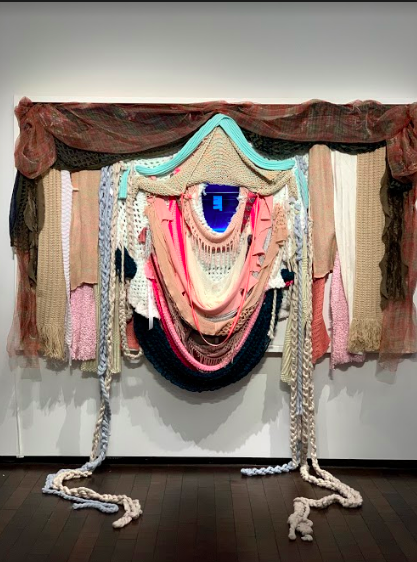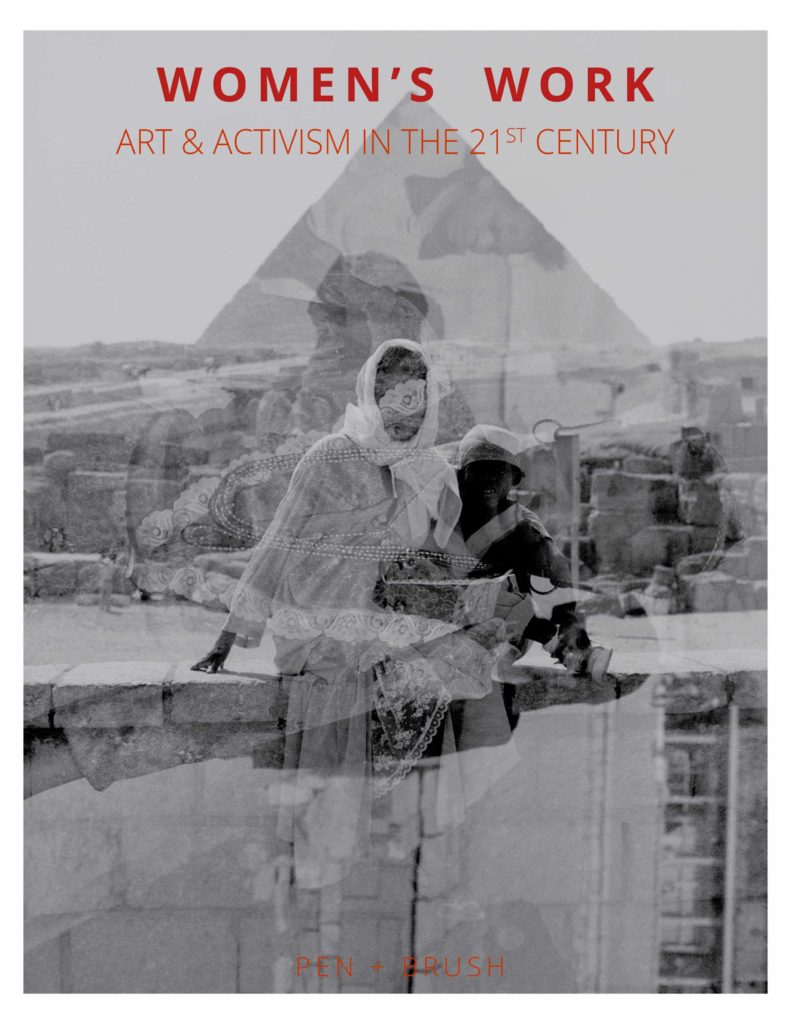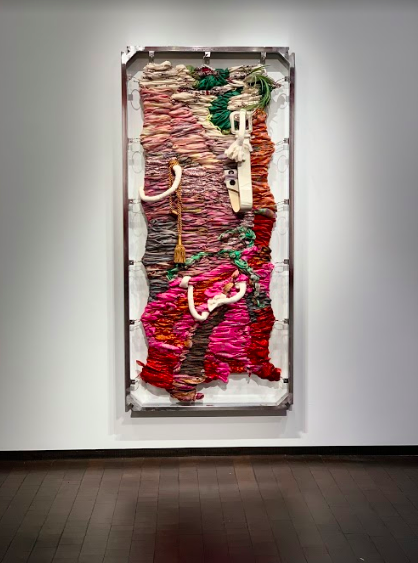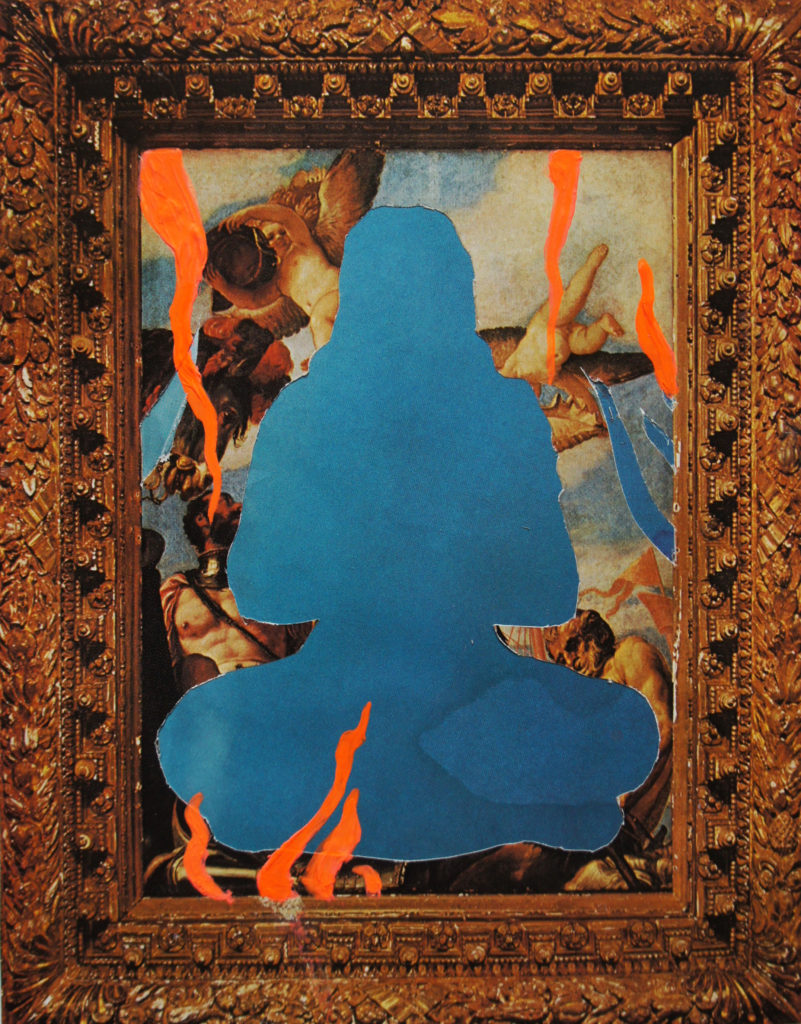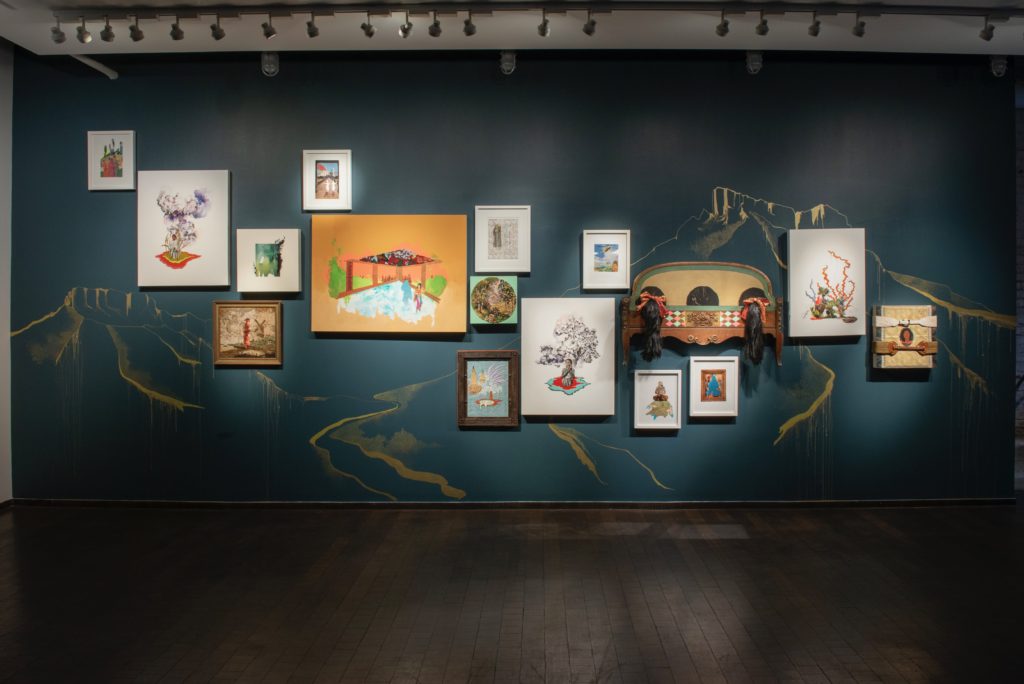Suchitra Mattai: Delicate Unravelings
Installation shot of Mala, 2018. Found fiber, crocheted fiber, video. © Suchitra Mattai. Courtesy of the artist and K Contemporary. Photo: Parker Daley.
The artist uses woven textiles, mass-produced objects, and video as materials to create invented landscapes—often inhabited with women protagonists (or traces of them)—that are reflective of diasporic histories and inter-generational memories.
BY MARISA LERER | SPRING/SUMMER 2019
The Women’s Work Issue coincides with the Women’s Work: Art & Activism in the 21st Century exhibition at Pen and Brush in New York City. On view April 10 – August 2, 2019.
Well before computers, weaving looms were one of the first machines to be programmed. And it was a woman—the 19th century mathematician Ada Lovelace—who saw the connection between Joseph-Marie Jacquard’s programmed loom, which used punch cards to determine which of the textile’s warp threads should be lifted up and when, and the potential for algorithmic calculations.
Lovelace wrote the first computer program for an invention Charles Babbage conceived in 1834. She explained in a letter to him: “The Analytical Engine weaves algebraic patterns just as the Jacquard-loom weaves flowers and leaves.” That it was a woman from the Victorian era who saw this connection speaks to the fact that many trades seen traditionally as the purview of men have long been shaped by women.
Suchitra Mattai illuminates women’s work through intermedia projects that reflect both tradition and technological rifts and shifts. Found and readymade objects, from vintage saris to cut-up magazines, populate Mattai’s oeuvre.
The artist uses woven textiles, mass-produced objects, and video as materials to create invented landscapes—often inhabited with women protagonists (or traces of them)—that are reflective of diasporic histories and inter-generational memories. The Guyanese-born Mattai learned the processes around creating these works from her Indian mother and grandmother, highlighting the importance of maintaining diasporic cultural knowledges.
Mattai shapes her landscapes with circulating cultural traditions that span multiple continents, including India, the Americas, and Europe. Traditionally, landscape scenes have been woven into tapestries and prints; Mattai in turn adopts cloth to create abstract topographical landscapes. She contrasts mass production through prints and factory woven-materials with the handmade processes of assemblage, collage, and textile craft techniques.
Installation shot of The Sweeter Side, 2019. Vintage saris, belt, fiber, tassel, faux plant, metal frame. © Suchitra Mattai. Courtesy of the artist and K Contemporary. Photo: Parker Daley.
Frames are a recurring motif in Mattai’s work. In The Sweeter Side (2019), supple vintage saris are stretched and pulled tensely, texturally contrasting with the solid silver metal frame that maintains the textile’s forms. Yet, loose threads hang at the bottom of the composition and softly contrast with the frame to reveal the delicate unraveling of the work itself. The undulating pattern in The Sweeter Side is disrupted by white cloth rope and an unbuckled belt; their purpose of binding, holding up, and supporting is rendered functionless.
In Mala (2018), meaning “garland” in Sanskrit, the frame contrasts with its construction. Soft, found crocheted fiber creates a curtained border for a video screen that plays an image of a moving mountainous landscape, intermixed with blurs and blocks of blue, black, and white.
In one collage, Mattai includes fragments of a painting depicting the fantastic, imaginary cityscape of sixteenth-century Venice, a global trading giant and center of luxury textile manufacturing, click here to see more. The image comes from Paolo Veronese’s Italian Mannerist work Mars and Neptune (1575 – 78).
Within the Frame, 2019. © Suchitra Mattai. Courtesy of the artist and K Contemporary.
Mars, the Roman god of war, and Neptune, the god of the sea, represent the Venetian empire’s dominion over land and water. Veronese represents this strength through hyper-masculinity, which Mattai then visually and physically disrupts with a silhouette of a calm, meditating, gender-fluid figure that floats in front of Veronese’s chaotic cityscape. In another of Mattai’s collages, the same silhouetted form embodies Veronese’s image and contrasts it with a green map of the mountains and towns of central California.
Installation shot of collages, 2019. © Suchitra Mattai. Courtesy of the artist and K Contemporary.
Mattai weaves and pastes disparate spaces and creates textual and textural adjacencies to remind the viewer that women today, much like Lovelace in the 19th century, are continually creating, shaping, and activating new terrains.
♦
Marisa Lerer is an Assistant Professor of art history at Manhattan College, where she teaches courses in modern and contemporary art. She specializes in Latin American and Latinx art, public art, and memorials. Her interest in art and social justice movements are reflected in her publications, which have appeared in the journals Public Art Dialogue and Visual Resources, among others. She has been honored with fellowships from Fulbright, New York University/Le Centre national de la recherche scientifique, and CUNY’s Center for Place, Culture and Politics. She is currently working on a book examining memorials to Argentina’s victims of state-sponsored terrorism.
OF NOTE Magazine is free to readers, free of advertising, and free of subscriptions—all made possible by generous supporters like you. Your tax-deductible gift will help us continue to feature innovative and emerging global artists using the arts as tools for social change.
OF NOTE Magazine is a fiscally sponsored organization of the New York Foundation for the Arts, a 501 (c) (3), tax-exempt organization. All donations are 100% tax-deductible to the full extent of the law.

